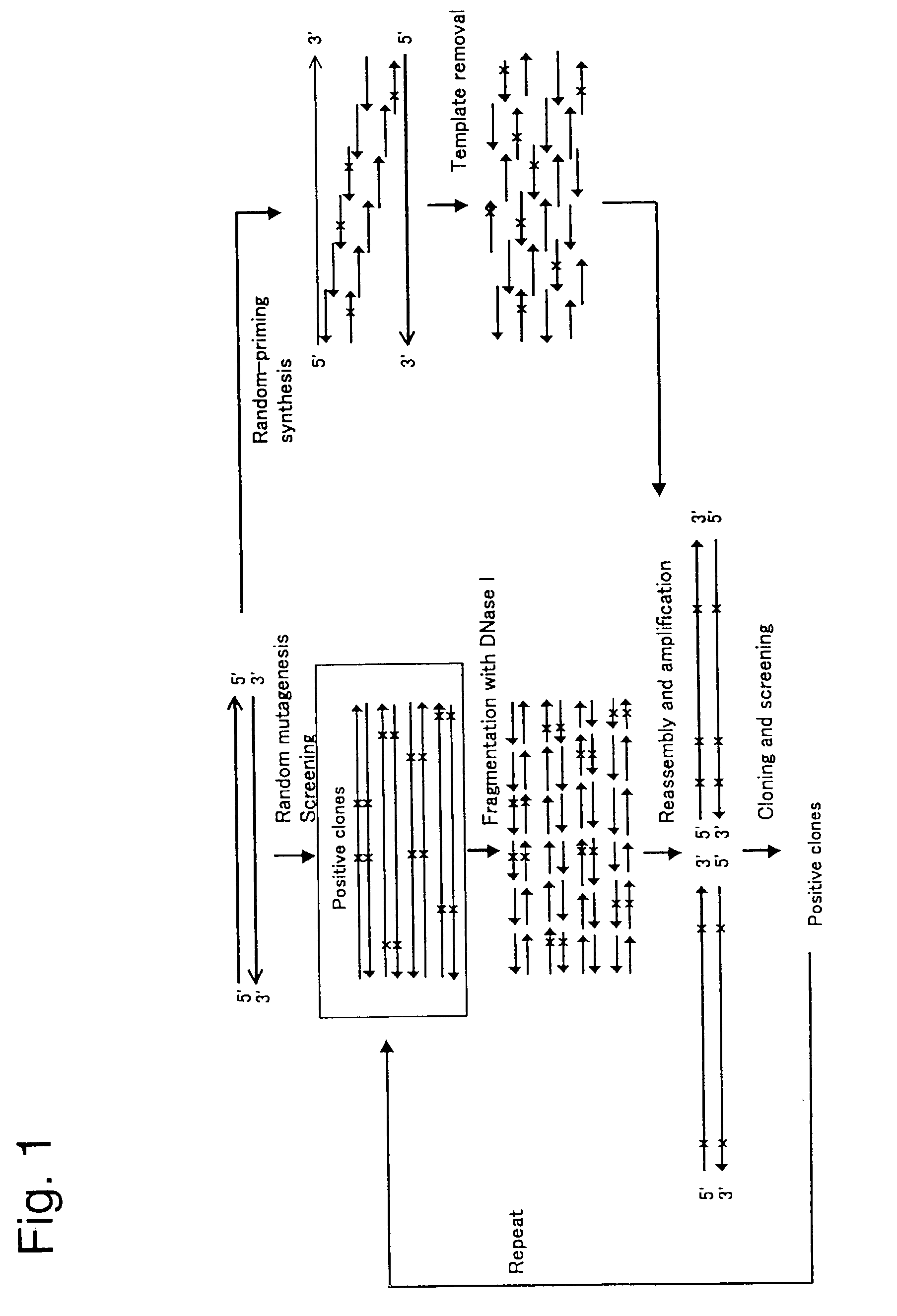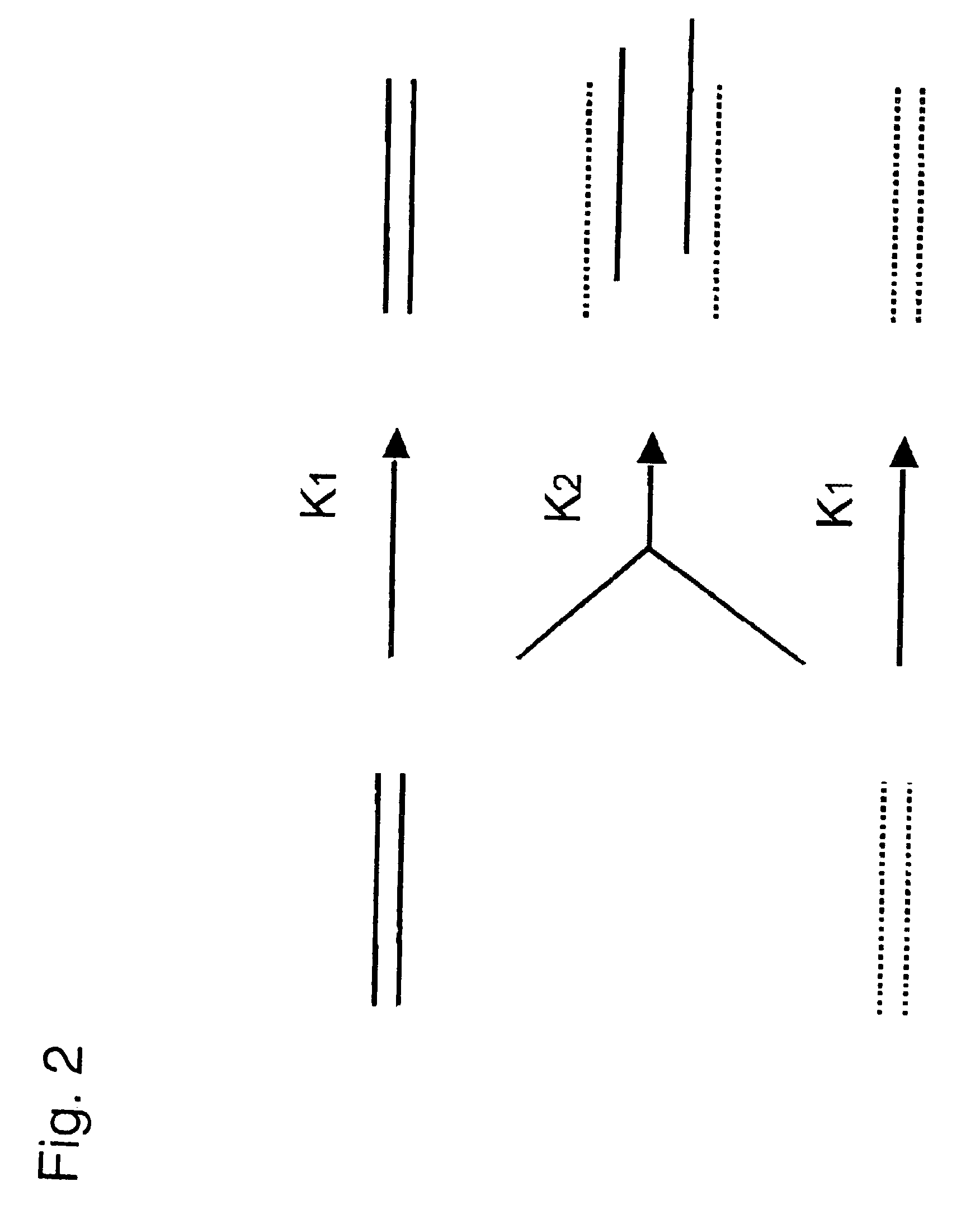Synthesis of hybrid polynucleotide molecules using single-stranded polynucleotide molecules
a polynucleotide and polynucleotide technology, applied in the field of hybrid polynucleotide molecules, can solve the problems of low yield of recombinants, and limited variety of shuffling products
- Summary
- Abstract
- Description
- Claims
- Application Information
AI Technical Summary
Problems solved by technology
Method used
Image
Examples
Embodiment Construction
of One of Many Possible Protocols of the Invention
[0082] (2-1) Preparation of ssDNAs
[0083] 1. Clone two homologous genes separately in phagemid vectors (for example, pBluescript). The orientations of one gene with respect to the origin of the single-stranded DNA replication should be the same, while that of another gene should be opposite with respect to the origin of the single-stranded DNA replication. Then, the coding strand of one gene and the non-coding strand of another gene are synthesized and packaged in phage particles. In other words, single-stranded DNAs of the two homologous genes are complementary to each other.
[0084] 2. Introduce the plasmids thus constructed into "male" E. coli such as JM109 (as the infection by single-stranded DNA phage requires F pili).
[0085] 3. Inoculate a 1 ml culture of 2.times.YT medium supplemented with an appropriate antibiotics with a single JM109 transformant colony.
[0086] 4. Grow the culture at 37.degree. C. with shaking (e.g. rotary shakin...
PUM
| Property | Measurement | Unit |
|---|---|---|
| temperature | aaaaa | aaaaa |
| optical density | aaaaa | aaaaa |
| total volume | aaaaa | aaaaa |
Abstract
Description
Claims
Application Information
 Login to View More
Login to View More - R&D
- Intellectual Property
- Life Sciences
- Materials
- Tech Scout
- Unparalleled Data Quality
- Higher Quality Content
- 60% Fewer Hallucinations
Browse by: Latest US Patents, China's latest patents, Technical Efficacy Thesaurus, Application Domain, Technology Topic, Popular Technical Reports.
© 2025 PatSnap. All rights reserved.Legal|Privacy policy|Modern Slavery Act Transparency Statement|Sitemap|About US| Contact US: help@patsnap.com



